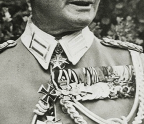MEDUSA’S CURSE


Just after 1 p.m. on Jan. 15, 2006, a convoy carrying members of the Canadian Provincial Reconstruction Team (PRT) entered Kandahar through its twin gates, known—with a tongue-in-cheek nod to McDonald’s—as the “Golden Arches.” The five vehicles passed a checkpoint, slowed to negotiate a traffic circle, then picked up speed. They were minutes from the relative safety of Camp Nathan Smith, PRT’s base in Afghanistan’s restive southern province.
As the convoy passed a taxi stand, a silver Toyota minivan swung out alongside the unarmored Mercedes-Benz G-Wagon light utility vehicle carrying veteran Canadian diplomat Glyn Berry. A moment later the Toyota exploded, hurling Berry’s vehicle into the air. The G-Wagon rotated several times before crashing back to earth, landing on its side in a tangle of flaming wreckage. Three soldiers lay wounded. Berry was dead. Canada had suffered its first fatality of what would become a blood-soaked year.
Canadian military personnel first deployed to Afghanistan in late 2001, and over the next four years eight soldiers were killed—the first four in a friendly fire incident involving an American F-16. Overall casualties were remarkably light, considering the Canadians’ extensive operations in eastern Afghanistan, primarily in Paktika Province.
In the spring of 2005 Defense Minister Bill Graham announced in Parliament that Canada would move its military operations into Kandahar province, the birthplace and heartland of the Taliban insurgency. The move south would drop Canadian forces into the Afghan equivalent of the Wild West and ultimately engage them in the First and Second Battles of Panjwai. Fought in the first half of September 2006, the latter marked NATO’s most significant
You’re reading a preview, subscribe to read more.
Start your free 30 days





